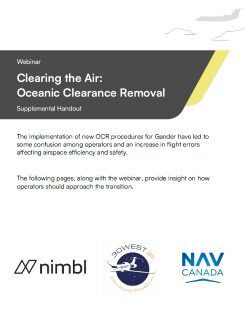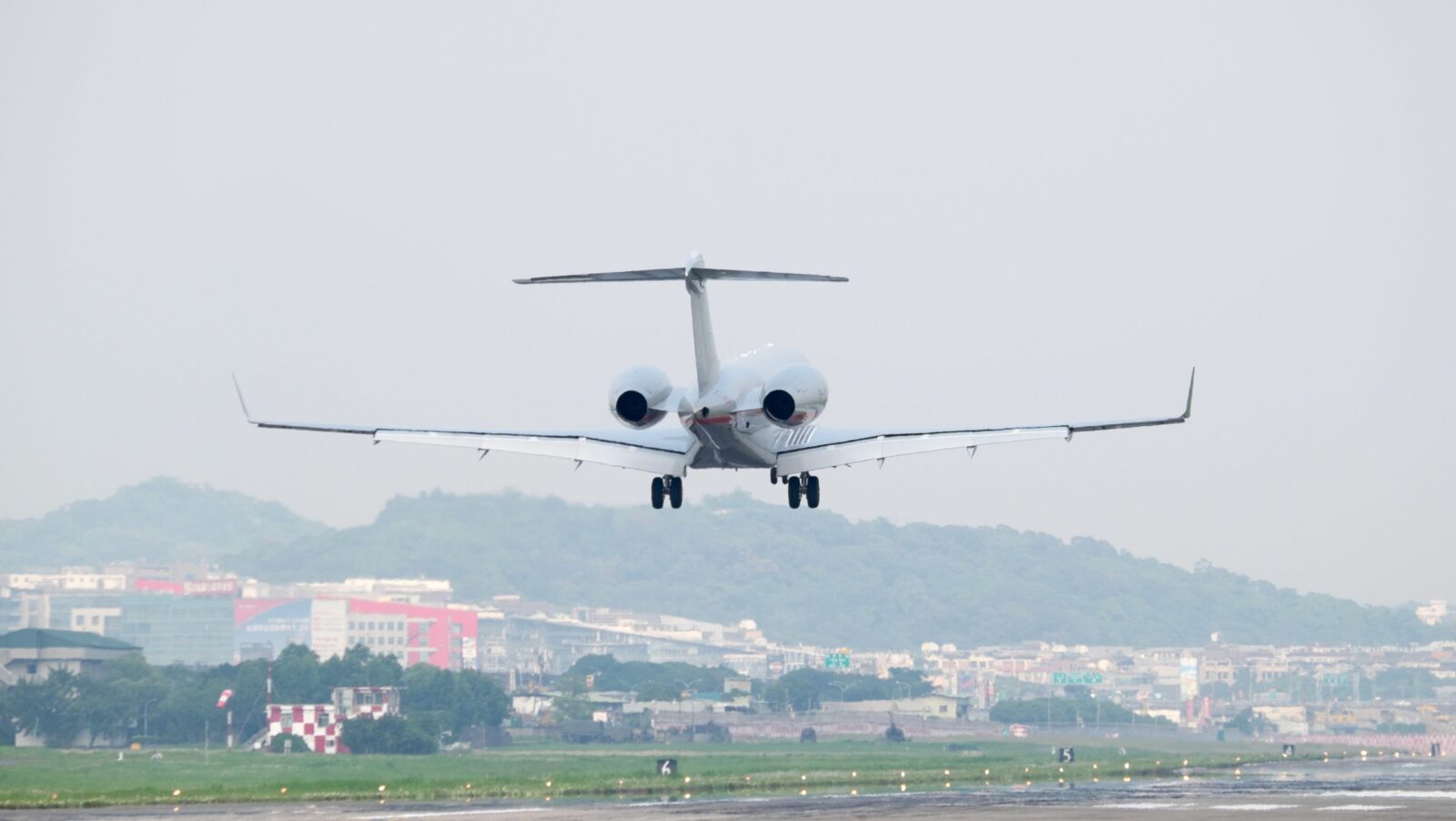Clear communication between aircraft and Air Traffic Control (ATC) is especially important when conducting operations over oceanic airspace. To ensure safe passage, the International Civil Aviation Organization (ICAO) released regulatory guidelines mandating that crews flying over much of the North Atlantic (NAT) must have Letters of Authorization for Data Link and RNP-4 by January 30, 2020. With these regulations already in effect, we want to make sure you have all the information you need to obtain your LOAs and keep your operations running smoothly.
What Are RNP-4 and Data Link and Why Do You Need Them?
The only way to permit more aircraft in a high-use airspace is to lower the separation standards between them. ICAO has mandated RNP-4 and Data Link to keep up with the growing air traffic in the NAT. This equipment helps to ensure efficient communication and minimum navigation performance allowing the distance between traffic to be reduced.
- RNP-4: More accurate navigation equipment, which is certified in accordance with ICAO’s “Require Navigation Performance” specifications, ensures that aircraft can fly accurately to a centerline. The lower the RNP value, the more accurate the equipment. This is especially important in oceanic or remote airspace where control centers are not available. In a highly trafficked airspace such as the NAT, it is critical that as many aircraft be certified with the most precise navigation equipment possible.
- Data Link: Navigation is only part of the equation; ATC still requires position reporting information from aircraft to properly track and control flights. Relying on pure voice communications for those position reports would be impractical as traffic expands — enter Data Link. By automating position reports with Automatic Dependent Surveillance — Contract (ADS-C) and Controller Pilot Data Link Communications (CPDLC) technology, ATC can ensure that critical position information is transmitted quickly and reliably.
What Should I Do Before Applying for These LOAs?
- Make sure you have completed any necessary upgrades to your aircraft. Check your Airplane Flight Manual and consult with your maintenance team to ensure the aircraft is actually capable of both RNP-4 and Data Link. This is typically outlined in the “limitations” section of the AFM. If a Service Bulletin / Change or STC is required, schedule those installations as soon as you can. It might be possible for the FAA to begin reviewing an LOA request while maintenance is still in progress, but it is definitely impossible to get an LOA for something your aircraft can’t currently do.
- Review your current RNP LOA, if any. Your flight department may or may not have an LOA for oceanic RNP operations already. Check if the FAA has already issued you a paragraph B036 LOA, and if so, check whether it lists “RNP-4.” Most non-NAT oceanic operations only require RNP-10, and for many years that was the only authorization given. It’s possible that you might only have RNP-10 even if your aircraft was capable of RNP-4 when you first applied for LOAs.
- Make sure your pilots’ training is up to date. For Part 91 operators, training requirements are a bit more relaxed than for the rest of the aviation world. This means you can take some liberties with training schedules and deadlines. However, to ensure that pilots are familiar with current procedures in the NAT, the FAA will likely hold you to a 24-month currency for your international / RNP training, if not even less. If your training is older than 24 months, it is recommended that you schedule a recurrent course ASAP.
- Contact a flight planning service to obtain a sample flight plan. For both the RNP-4 and Data Link LOAs, the FAA will require that you provide a complete sample flight plan. Note that this sample should reflect both a full crew plan (i.e., the computer printout, including the fuel block, waypoints, ETPs, etc.) and the one-page ICAO flight plan. The FAA may check your plan for any number of potential issues, including compliance with fuel requirements, the equipment codes used, or even just that you’ve selected an appropriate destination alternate. So, it is important to choose a flight planning vendor that you trust to provide an accurate and suitable plan. Check out our top tips and tricks for ensuring your flight plan is ready in our Flight Planning Codes Demystified article.
LOA Applications Now Will Yield Cost Savings in the Long Run
While LOA applications may seem like a lot of work, shirking them can have real-world consequences. There are significant financial penalties for being caught flying without required LOAs and the alternative — flying around, above, or below the airspaces with these mandates — isn’t much better. You may be forced to fly hours out of the way, incurring unnecessary additional fuel costs and delays.
The applications can be a process, but the time and cost of applying for these LOA applications does not compare to the price of flying an additional four or five hours, or the fine for avoiding them altogether.
Once approved, your LOAs likely won’t need to be considered again until the FAA releases new regulations and guidelines. But if there ever is a reason to resubmit an LOA application, Ready Flight can help you stay on top of such changes. When we hear about new regulations that could affect operators’ LOAs, we can push news out to our subscribers, detailing what those changes are and what actions departments will have to take. What LOAs look like now is not what they looked like five years ago, and most likely not what they will look like five years in the future, so it is best to have the tools to react quickly.
Contact us for any LOA support, and check out our free LOA Guide for more information.
Related Resources
View All
View All

Clearing the Air: Oceanic Clearance Removal (OCR)
Learn more

You Don’t Need An LOA For RNAV… Unless You Do!
Learn more
![MEL, MMEL, NEF: What are you required to have? [+ Free MEL Guide]](https://gonimbl.com/wp-content/uploads/mel-yellow-gradient.jpg)
MEL, MMEL, NEF: What are you required to have? [+ Free MEL Guide]
Learn more

LOAS: What They Are, Who They’re For, And How To Get Them
Learn more
